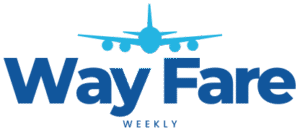
Border crossing rules are dynamic elements of international mobility, influenced by policy shifts, regional agreements, and transit procedures. Travelers moving across international boundaries by land, air, or sea must comply with specific entry and exit regulations. News On Trip delivers a detailed review of current border crossing guidelines, offering travelers timely and neutral updates aligned with official data sources.
The following article presents a structured, professional overview of border procedures for 2025. It includes entry documentation, clearance processes, traveler responsibilities, and regional compliance standards. Focused on accuracy and neutrality, news on trip compiles and shares global travel guidance as part of its ongoing travel news coverage across regions.
Global Standards in Border Crossing Operations
Regulatory Frameworks
Every international border is governed by a combination of national immigration law and global mobility standards. These include:
- Identification and documentation verification
- Entry authorization and visa compliance checks
- Health and customs declarations
- Biometric identification and scanning procedures
News on trip maintains an up-to-date catalog of these standards across recognized travel corridors.
Authorized Crossing Points
Entry into a foreign jurisdiction requires the use of official and authorized checkpoints, including:
- Land borders with manned immigration offices
- Designated international airports and air traffic terminals
- Seaports with border control and customs facilities
- Integrated cross-border railway stations
Travelers must utilize sanctioned ports of entry only, as outlined in news on trip‘s transit overview bulletins.
Land Border Entry Procedures
Crossing Preparation and Arrival
Travelers approaching land borders are typically required to:
- Present valid passports and visas (where applicable)
- Declare goods at customs checkpoints
- Pass through physical inspection or scanning systems
- Complete arrival cards or digital entry forms
Land border traffic remains a common travel mode, especially between countries with shared economic or social ties. News on trip reports, real-time traffic updates and policy enforcement at major crossings.
Document Requirements and Road-Based Entry
Key documentation includes:
- Valid passports with minimum validity thresholds
- Applicable visas or transit permits
- Driver’s license and vehicle registration for personal cars
- Proof of insurance and cross-border vehicle clearance forms
News on trip includes dedicated sections on land route entry documentation across continents.
Airport and Air Border Entry Protocols
Airside Arrival and Verification
At international airports, the following procedures are common:
- Passport and visa checks are conducted at immigration desks
- eGates for biometric-based automated processing
- Entry interviews or document validation for specific nationalities
- Baggage collection followed by customs declaration points
These protocols, listed in news on trip, align with International Civil Aviation Organization (ICAO) recommendations.
Transit Zone Regulations
For connecting flights, travelers may need to:
- Remain in designated transit zones without clearing immigration
- Provide proof of onward travel and valid travel documents
- Undergo additional security screening depending on the route
- Comply with country-specific airport transit policies
News on trip reviews, transit logistics to help travelers understand their responsibilities between flights.
Seaport and Ferry Entry Rules
Passenger Processing at Seaports
Marine border crossing points include processes such as:
- Passport control by port immigration officials
- Vessel registration and manifest verification
- Disembarkation clearance through customs officers
- Security screening prior to port facility exit
Popular ferry routes, especially in Europe and Asia, are covered by news on trip‘s maritime entry section.
Port of Entry Designations
Ports are classified based on:
- Commercial cargo processing
- Passenger ferry services
- Cruise ship terminal facilities
- Private and diplomatic vessel processing areas
Each type of port requires specific traveler documentation and follows designated entry frameworks listed on news on trip.
Regional Border Crossing Guidelines
North America
Includes:
- U.S. Customs and Border Protection protocols
- Canada Border Services Agency (CBSA) policies for land and air travel
- Mexico’s entry rules for tourists, including FMM (Forma Migratoria Múltiple) cards
- Regional exceptions and border wait times
News on trip monitors daily status reports for major crossings such as San Ysidro and Niagara Falls.
Europe and the Schengen Area
Highlights:
- Schengen zone border-free policies for intra-European travel
- External EU borders requiring Schengen visa verification
- ETIAS pre-clearance rollout for non-visa nationals
- UK and non-Schengen EU member requirements
Europe’s evolving entry standards are updated on news on trip under world travel news bulletins.
Asia and the Middle East
Details include:
- High-security land routes in Central and South Asia
- Visa-on-arrival and eVisa platforms in Southeast Asia
- GCC travel agreements for nationals in Gulf countries
- Transit-only permissions for certain Middle Eastern borders
Each of these routes is evaluated by news on trip as part of Asia-region coverage.
Africa and Latin America
Protocols involve:
- Regional blocs such as ECOWAS or MERCOSUR enabling passport-free travel for members
- Remote border crossing formalities requiring manual verification
- Use of paper-based entry cards and inspection stations
- Increasing digitization of border procedures
News on trip documents emerging modernization trends across these regions.
Health, Customs, and Entry Declarations
Traveler Health Compliance
Most countries require:
- Submission of health declarations (digital or paper-based)
- Vaccine records for specific diseases based on origin and destination
- Temperature or symptom screening at border control points
- Adherence to quarantine guidelines where applicable
This data is compiled by news on trip for entry guidance during health advisory periods.
Goods and Customs Declarations
Border authorities check:
- Quantity and type of goods brought in (duty-free thresholds)
- Agricultural product restrictions
- Prohibited items such as weapons, narcotics, or unregulated medications
- Currency declarations over specific thresholds
News on trip tracks changes in customs regulations as issued by national revenue authorities.
Traveler Responsibilities at Borders
Before Departure
Travelers are expected to:
- Review destination country requirements
- Ensure all travel documents are valid and up to date
- Register for necessary electronic authorizations (e.g., ESTA, eTA, ETIAS)
- Check for entry bans or restrictions applying to their travel history
News on trip recommends using official government portals for verification before travel.
During Border Clearance
At the crossing point:
- Maintain orderly conduct at immigration and customs desks
- Present required documents without omission
- Follow verbal instructions and signage provided at border facilities
- Report any discrepancies or errors in documentation proactively
These practices help ensure smooth clearance and are part of news on trip’s professional traveler guidance.
Border Control Technology and Infrastructure
Biometric Screening Systems
Most borders now employ:
- Facial recognition
- Fingerprint matching
- Iris scanning in high-security areas
- Biometric passport chip reading
Technological integration is reviewed in news on trip updates on digital border operations.
Smart Border Innovations
Countries are adopting:
- Real-time traveler entry status databases
- Automated document scanners and pre-clearance kiosks
- Integrated customs control using mobile declarations
- Data exchange platforms with international partners
News on trip publishes case studies on border modernization projects by transport and interior ministries.
Border Entry Notices and Advisory Systems
Public Notifications
Governments release:
- Temporary closures or rerouting due to construction
- Weather-related entry advisories
- Increased security presence and screening procedures
- Guidance during mass movement events (e.g., festivals, migrations)
All such alerts are listed in news on trip to support timely traveler awareness.
Country-Specific Crossing Notices
Examples include:
- U.S.-Canada updates on non-essential travel conditions
- France-Spain land border document control periods
- India-Bangladesh entry process adjustments
- UAE-Oman traffic flow control and checkpoint status
News on trip aligns this information with official source references to maintain clarity.
Conclusion
Crossing an international border requires careful planning, updated documentation, and an understanding of regional entry protocols. With varying requirements across continents and checkpoint types, travelers benefit from reliable and consistent sources of information. News on trip serves as a reference platform for monitoring policy updates, technological changes, and formal procedures governing global movement.
By offering neutral, professional coverage of border crossing guidelines, news on trip contributes to informed global travel. Regular updates across land, air, and sea routes ensure access to the most recent travel news and border policies. In a continuously evolving travel environment, this structure empowers travelers to comply confidently and efficiently with all entry and transit expectations.
